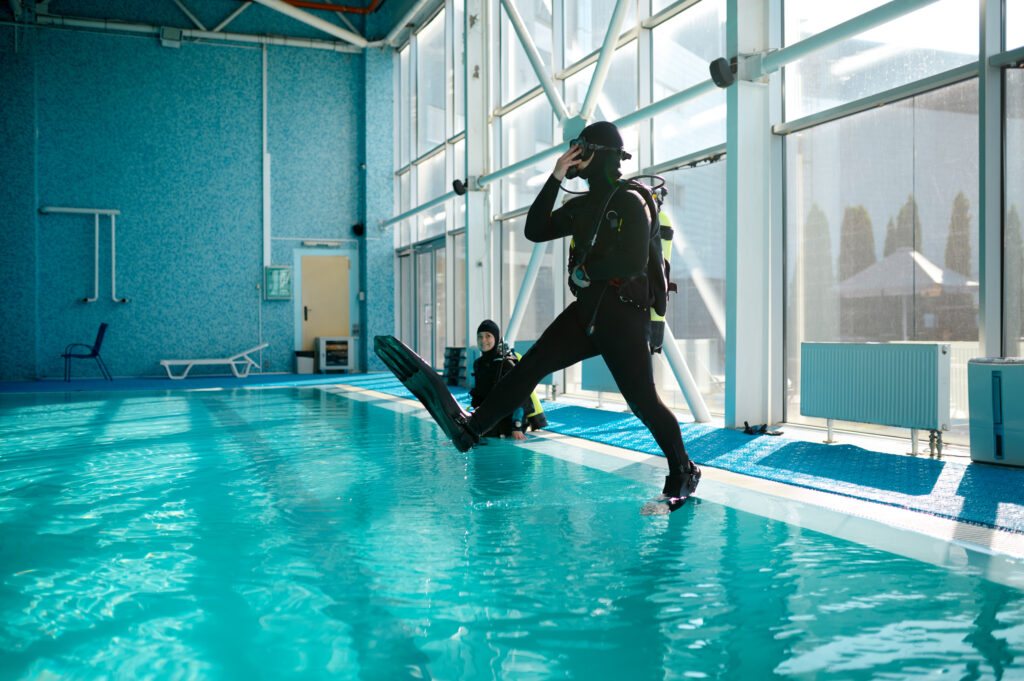What are Diving Signals?

Diving signals are the primary means of communication between divers when they are underwater. Unlike the surface world, verbal communication is impossible underwater due to the limitations imposed by the diving environment, such as water density and the need for breathing apparatus. As a result, divers rely on a well-established set of visual and tactile signals to convey messages. These signals are essential for ensuring safety, coordinating activities, and sharing observations during a dive. The development and standardization of these signals have been critical to the advancement of both recreational and professional diving, allowing divers from different backgrounds and experiences to communicate effectively.
What is a DIN Valve?

A DIN valve is a type of valve used in scuba diving equipment, specifically for connecting a scuba tank to a regulator. The term “DIN” stands for “Deutsches Institut für Normung,” which translates to the German Institute for Standardization. This institute is responsible for developing and maintaining the standards that define the specifications for these valves. DIN valves are known for their robust design and reliable performance, making them a popular choice among divers, particularly in Europe and in technical diving communities.
What is a Lanyard?

A lanyard in the context of scuba diving is a crucial accessory designed to secure various pieces of diving equipment to a diver’s body or buoyancy compensator device (BCD). These cords, straps, or retractable reels ensure that essential tools such as cameras, flashlights, and dive computers remain attached to the diver, preventing accidental loss in the underwater environment. The importance of a lanyard cannot be overstated, as it contributes significantly to the safety and efficiency of diving operations, providing peace of mind and allowing divers to focus on their underwater activities.
What is Professional Diving?

Professional diving encompasses a range of underwater activities performed by individuals trained and certified to work in various underwater environments. These divers are equipped with specialized skills and equipment to carry out tasks that support industries such as commercial oil and gas, scientific research, military operations, and public safety. The importance of professional diving lies in its contribution to the economy, scientific discoveries, and public safety operations, making it an indispensable occupation with a rich history and evolving technology.
What is a Helicopter Turn when Scuba Diving, Freediving or Snorkeling?

The helicopter turn is a vital scuba diving maneuver that allows divers to rotate around their vertical axis using minimal fin movements. This technique enhances underwater mobility, control, and agility, enabling divers to navigate through tight spaces, maintain their position while observing marine life, and efficiently change their orientation without disturbing the environment. In this comprehensive entry, we will discuss the mechanics, benefits, and applications of the helicopter turn, as well as provide tips for mastering the skill.
What is Rapture of the Deep?

Rapture of the Deep, commonly known as nitrogen narcosis, is a condition experienced by scuba divers at significant depths. This phenomenon, resulting from the increased partial pressure of nitrogen when diving, can lead to a range of symptoms that affect cognitive and motor functions. Understanding Rapture of the Deep is crucial for divers to ensure safe practices and avoid potentially hazardous situations underwater.
What is No Fly / No Fly Time?

No Fly Time, also referred to as No Fly Zone or No Fly Period, is the recommended interval between the completion of a dive and boarding an airplane. It is an essential precautionary measure that helps prevent Decompression Sickness (DCS) and other altitude-related issues that may arise from flying too soon after scuba diving. The importance of observing No Fly Time stems from the physiological effects of pressure changes on the body, both during diving and air travel. Failure to allow sufficient time for these changes to normalize can lead to serious health complications.
What is a Diver Propulsion Vehicle?

A Diver Propulsion Vehicle (DPV), also known as an underwater scooter, is a motorized device used by scuba divers to increase their range underwater with minimal physical exertion. By holding onto the DPV, divers can be pulled through the water at various speeds, allowing them to cover greater distances and access dive sites that would otherwise be challenging to reach. DPVs are used in various types of diving, from recreational to technical and even military applications, providing significant benefits in terms of efficiency and safety.
What is Wet Filling?

Wet filling is a process used in scuba diving to fill diving cylinders with gas while they are submerged in water. This method is important for ensuring safety and efficiency in scuba diving. By understanding the intricacies of wet filling, divers can better appreciate its significance and the technical considerations involved.
What is a Wet Pot?

A Wet Pot is a specialized water-filled hyperbaric chamber used predominantly in experimental work, training, and as a transfer chamber in saturation diving systems. These chambers play a crucial role in the field of hyperbaric operations and scuba diving by providing a controlled environment for divers and researchers. In training scenarios, Wet Pots simulate underwater conditions, allowing divers to practice and prepare for real-life situations. In experimental contexts, they enable scientists to conduct research on the effects of pressure and gases on the human body and various materials. Furthermore, Wet Pots serve as transfer chambers in saturation systems, where they facilitate the safe removal and handling of wet equipment after deep dives. Their versatility and utility make Wet Pots an essential component of modern diving and hyperbaric practices.
